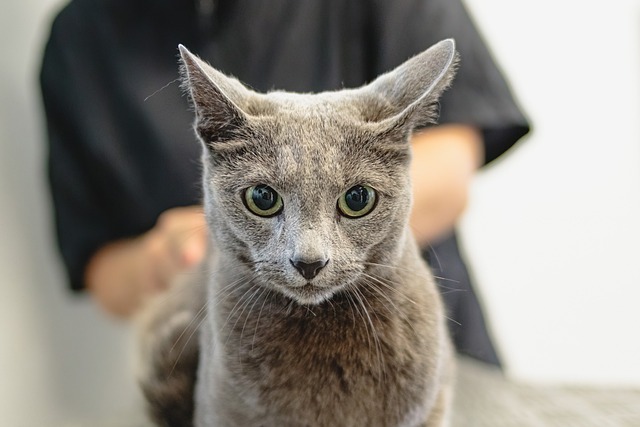Liverpool's antique scene boasts a rich history of silver jewelry, particularly from the Victorian era, featuring elaborate brooches, necklaces, and pocket watches. These treasures reflect the city's trading past and are highly sought after for their craftsmanship and intricate designs. Preserving these vintage pieces requires careful handling and storage to maintain their value and beauty, allowing collectors and enthusiasts to connect with Liverpool's cultural heritage through tangible links to its past.
Explore the enchanting world of Liverpool’s antique silver jewelry heritage. From its rich history to exquisite craftsmanship, this guide delves into the significance of vintage silver pieces. Discover the evolution of silver artistry, uncover iconic designs imbued with profound meanings, and learn expert tips for preserving these treasured heirlooms. Whether you’re a collector or admirer, unlock the stories woven into Liverpool’s antique silver jewelry.
- Uncovering Liverpool's Antique Silver Jewelry Heritage
- Historical Context: The Evolution of Silver Craftsmanship
- Iconic Designs and Their Meaning
- Preserving and Appreciating Vintage Silver Pieces
Uncovering Liverpool's Antique Silver Jewelry Heritage
Liverpool, a city with a rich history and cultural heritage, has long been recognized as a hub for antiques and collectibles. Among its many treasures, antique silver jewelry stands out as a significant part of its legacy. Uncovering the stories behind each piece offers a glimpse into the past, where fashion, craftsmanship, and social status intertwine. The city’s vibrant trading history has contributed to a diverse range of silverware, from elegant brooches and necklaces to intricate pocket watches.
Many Liverpool antiques reflect the Victorian era, with intricate designs featuring floral motifs and elaborate engravings. These pieces not only serve as stylish accessories but also as historical artifacts that tell tales of love, loss, and social gatherings from bygone days. Local antique shops and auctions are treasure troves for enthusiasts, where one can discover rare silver items that once adorned the bodies of Liverpool’s elite, offering a unique connection to the city’s past glamor.
Historical Context: The Evolution of Silver Craftsmanship
Silver craftsmanship has a rich history, evolving significantly over time, particularly in cities renowned for their antique trade, like Liverpool. In ancient times, silver was highly valued for its rarity and malleability, leading to intricate designs and exquisite jewelry pieces. Skilled artisans crafted these treasures, often influenced by the cultural and artistic trends of their era. As techniques advanced, so did the complexity of silverwork, from simple filigree to elaborate engravings and detailed carvings.
In Liverpool, a hub for international trade, silver craftsmanship reached new heights during the Victorian era. The city’s thriving antique market attracted collectors and traders, fostering a culture of appreciation for fine jewelry. This period saw the creation of stunning silver pieces, many of which bear the hallmarks of renowned Liverpool silversmiths. Today, these antiques are sought after by collectors worldwide, offering a unique glimpse into the historical context and artistic prowess of their time.
Iconic Designs and Their Meaning
Antique silver jewelry from Liverpool holds a unique charm, often featuring iconic designs that tell stories of bygone eras. These pieces are more than just decorative; they are cultural artifacts carrying historical weight. For instance, the intricate engravings and motifs on an antique silver pocket watch could represent a specific era’s fashion and social status, offering a glimpse into the lifestyle of Liverpool’s elite in the 18th or 19th centuries.
Similarly, silver cufflinks with ornate designs might symbolize significant events or cultural influences. They could depict local landmarks, such as the iconic Liverpool Cathedral, or reference historical figures associated with the city. These designs not only showcase the artistic craftsmanship of the time but also serve as a visual link to Liverpool’s rich heritage, making each antique piece a valuable treasure for collectors and history enthusiasts alike.
Preserving and Appreciating Vintage Silver Pieces
Preserving vintage silver pieces is an art in itself, especially when it comes to antique jewelry from places like Liverpool’s rich antiquing scene. It involves a delicate balance between maintaining history and ensuring these treasures remain valuable and beautiful. Owners must handle each piece with care, using appropriate cleaning methods to avoid damaging the intricate designs. Polishing should be done sparingly, preserving any patina that adds to the piece’s character and age.
Regular maintenance includes storing them in cool, dry places away from direct sunlight. This prevents tarnishing and maintains their luster. For Liverpool antiques enthusiasts, displaying these pieces in stylish yet protective cases can enhance their allure while keeping them safe from everyday wear and tear. Appreciating vintage silver is not just about the aesthetic; it’s a way to connect with the past, owning a tiny piece of history that tells tales through its intricate patterns and time-honored craftsmanship.
Liverpool’s rich heritage in antique silver jewelry is a treasure trove for collectors and history enthusiasts. The city’s past is woven into each intricate design, offering a unique glimpse into times gone by. By understanding the historical context and symbolic meanings behind these pieces, we can truly appreciate the artistry and craftsmanship that has endured through the ages. Preserving vintage silver ensures that this cultural legacy continues to inspire and captivate future generations of Liverpool antiques aficionados.
